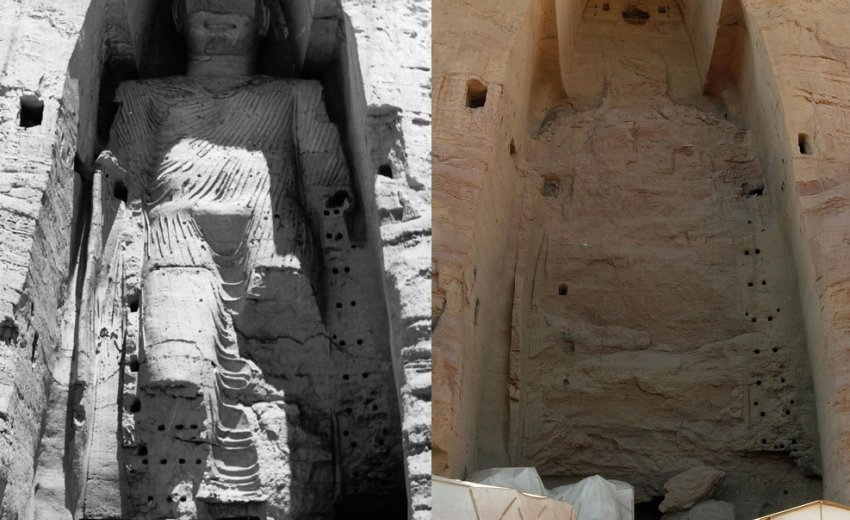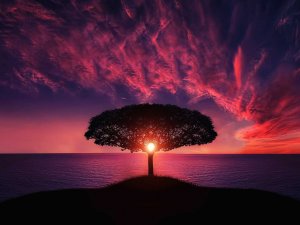Recent decades have seen the Middle-East in flames.
Yes, people have always found enemies that they feel compelled to fight and kill but it is usually to acquire more power, land, riches or women. A corollary -- collateral damage -- becomes cultural destruction of the perceived enemy.
But the goal has not always been callous destruction of the art, music and literature of the enemy. The victors have often carted away truckloads of the art and relics -- the riches – of the vanquished people to their own museums and palaces.
Witness, for example, the Elgin Marbles that now adorn British exhibits but were stolen; the riches of the erstwhile ruler of the Greater Punjab, Maharaja Ranjit Singh, including the legendary Kohinoor diamond, which is now a treasured addition to the crown of the British monarch.
Keep in mind that even today, over half a century after the end of the Second World War, the world is still busy identifying, hunting and attempting to reclaim the art that the Nazis forcibly or deceptively took from the Jews. The compendium of such acts is endless, the human history blood curdling. The list would be long and never-ending and I leave it incomplete here.
The past few days The New York Times and others of the national press have brought us disturbing images and reports of Talibanesque Muslim fighters proudly hammering sculptures into shards in Iraq, Syria and elsewhere in the Mideast. In the process they are also destroying early Christian monuments and relics.

I remember that not so long ago in 2001 when the government of Afghanistan with a similar bent went about methodically destroying about 1700 year old huge statues, the Buddhas of Bamiyan, in their land. I also recognize that UNESCO says that the focus at Bamiyan remains on stabilizing the niches and on preparing a modest open-air museum at the site rather than reconstructing the statues.
Why?
Because to the destroyers, these works were celebrations of pagan religions and cultures; therefore, they had no place in Muslim religion and society.
That sounds fine but to then destroy them is willful destruction of the heritage of a people. And that’s not acceptable. That leaves mankind the poorer. They are a part of history and even if such history is inconvenient, embarrassing or unwelcome it cannot be wiped out.
I point out that that literary heritage of a people also tells a similarly sorry tale. Around 2000 years ago the Library in Alexandria – the finest and largest collection of its time – was burned several times, once each by the Christians and by the Muslims because to each the library housed the writings of pagans and infidels.
Let’s return to art that Islam is so hypersensitive about today. I know that Islam does not look tolerantly at any images of the prophet Mohammed and I suspect none are to be found in Islamic society. That’s their choice.
Sikhs, too, do not approve of supposed paintings or icons and statues of any of its ten Founder-Gurus from Guru Nanak to Guru Gobind Singh. In fact the eternal Guru of the Sikhs is the Word or Sabd, not the ten Gurus who delivered the message in human form. No Guru ever sat for a picture or a painting and there is no record of what any Guru looked like physically.
But in India where the religion arose, Sikhs are a drop in the sea of Hindu culture and the majority of Sikhs have converted from Hinduism. In that society, statues, icons and paintings are a dime a dozen. So is it any surprise that Sikhs show a conflicted attitude in practice?
We continue to preach against statues, icons and pictures and yet most Sikh homes continue to display the image of one or more Gurus. The only tortuous justification would be that a picture or other relic reminds the Sikh of his connection to the Guru. So it is not difficult to find calendars and wall hangings with what we may label artistic works on what the Gurus looked like. A similar connection to the Gurus’ ideas is harder to envision – and that is a human shortcoming.
Gurduaras historically have not displayed any images of Gurus but that is beginning to be breached here and there.
But if someone put up a statue of a Guru outside a gurduara, a huge painting adorned public space or a human actor played the part of a Guru, much of the Sikh world would erupt in protest.
One can rue the disconnection between teaching and practice and do so. At the same time one can see that icons and paintings can become a prop, much like what a child needs in his/her formative years.
Again the institutional position is and should remain clear – no images, icons or statues of any Gurus. The personal, individual practice will sometimes fail and does so routinely.
My Muslim friends: Yesterday it was Buddhist Art, today it is Christian. Art is not a threat to any doctrine or faith; it is a celebration of life and a witness to human strengths and weaknesses along with their temptations and failings.
To my mind, no religion, not even Islam, would condone the destruction of cultural heritage and history of a people.
March 1, 2015





